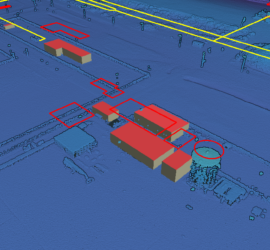In my previous post I showed how to use Potree to create a web viewer for point clouds. But it doesn’t stop there, as Potree is also capable of displaying other geographic data. The Shapefiles example […]
Blog
Potree is the de-facto standard web viewer for point clouds. It can display huge point clouds by showing only the relevant parts of the cloud. It can display using all attributes of a LAS/LAZ file and […]
Azure is Microsoft’s Cloud Computing service. Like its competitors from Google and Amazon, it offers many different services – storage, databases, machine learning, virtual machines, and others. Some of the services are for free, others can […]
Linux was my main operating system during my university days, but when I started working at ARCADIS, I was back in an all-Windows environment. I’ve learned to live with it, but there are still cases when […]
Yolo is a well-known and popular object detection architecture. It is also very easy to use as things like model download and using various input sources are handled by the detect.py script. The Tensorflow Object Detection […]
If you want to explore data science and machine learning on Windows, Anaconda is the easiest way to get a running Python distribution with all required packages. You can install additional packages with the conda install […]
Object detection and recognition is a hot item, and massive advances have been achieved in recent years thanks to Convolutional Neural Networks (CNNs). Besides the technology, you also need either labelled training data or pre-trained models. […]
When dealing with point clouds, you’ll probably run into the LAS format at some point, as it is the file format most commonly used for point clouds acquired through laser scanning. LAS supports a number of […]
Windows batch scripts are incredibly useful for processing data. You can automate many tasks by a simple batch file. The most common thing that I use is a for loop over all files of a certain […]









